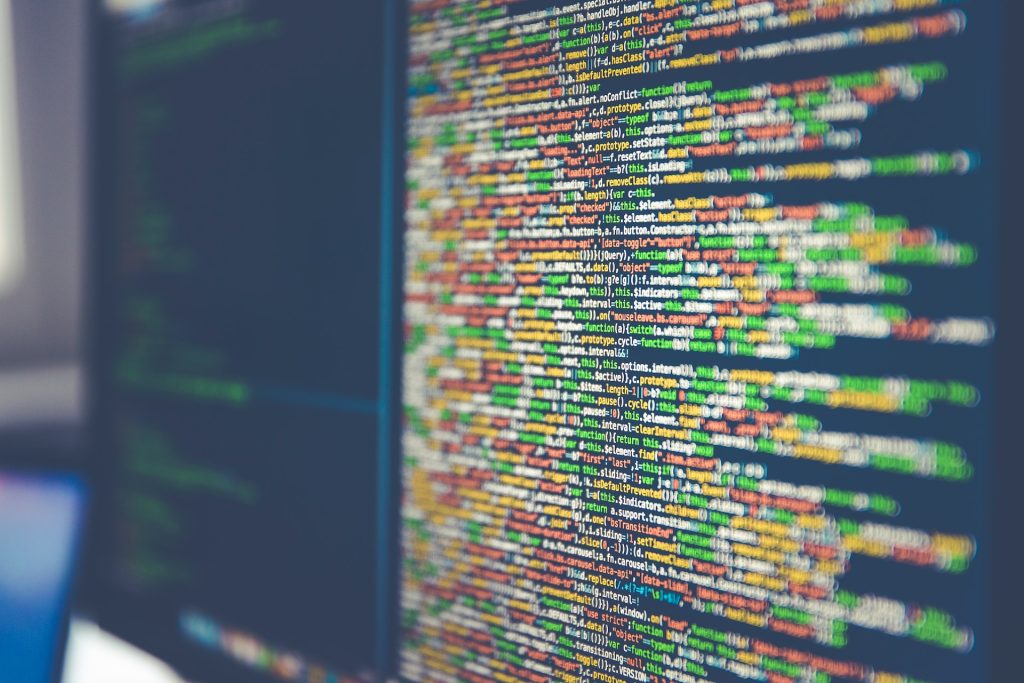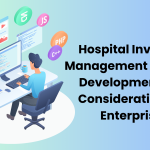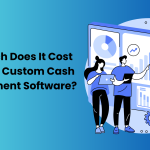With the proliferation of our dependency on technology, the healthcare software market size is also expected to rise meteorically. The medical software market is projected to reach $104,1 Billion by 2030. This indicates the future of the software development healthcare industry .
Let’s begin with some of the driving factors behind this big figure. Healthcare providers are paving a way out to optimize medical software development services. Lifestyle changes with Covid-19, urge to improve business workflows, maximizing revenue and patient care in all aspects are all the advantages of choosing efficient medical health services.

Custom solutions in software development healthcare have made significant changes in the medical service delivery to the patients. The industry is surely surging up and has great potential.
What does the future hold? We have brought this definitive guide for you. Let’s dive into types of healthcare software development, key trends, challenges and future prospects that will sculpt the landscape of the healthcare industry in the year 2024 and beyond.
What is Healthcare Software Development?
Healthcare software development is the process of creating an ecosystem of personalized software solutions to streamline service delivery for healthcare personnel.
These solutions carry out a variety of tasks, improve efficiency, simplify data administration, decrease waiting times, and decrease the costs associated with providing healthcare.
Various Types of Healthcare Software Development
In general, healthcare apps can be divided into two categories; Software aimed for patients or the general public and custom software made specifically for healthcare practitioners.
Healthcare Software for Patients / Public
1: Health Monitoring Apps
Health monitoring apps are one of the best examples of healthcare software. These applications are used to determine critical symptoms for a medical condition and also prescribe medication. Patients with long-term medical disorders (such as diabetes, cancer, or cardiovascular diseases) mostly maintain their health with the help of such applications.
2: Mental Health Software
This type of app greatly affects the mental health of the patients or public.Numerous built-in functions are included, including breathing exercises, recording workouts, meditations, and more. Users who use this software can manage their anxiety, sadness, stress, difficulty sleeping, and other disorders.
3: Electronic Prescription Software
By enhancing the relationship and providing patients with all the conveniences they need, the technology enables the immediate addition of medical prescriptions to the pharmacy. E-prescription apps
Custom Healthcare Software for Medical Professionals
1: Telehealth / Telemedicine Software
Telemedicine software allows doctors, psychiatrists, and other medical health practitioners to connect non-emergency patients through video calls and schedule online consultation and appointments. Such type of healthcare software facilitates medical consultants to bring down patient no-shows practices. Patients also have the luxury to take consultation from the comfort of their homes.
2: Healthcare CRM Software
Medical professionals may easily and conveniently gather and manage patients’ electronic health records, including vital signs (weight, temperature, blood pressure, etc.), appointments, medications, tests, and medical histories, with the use of medical or health record applications. It is extremely important for doctors to have access to such real-time information in order to closely monitor the whole therapy process.
3: Hospital Management Software
The whole administration and billing procedure is streamlined by this kind of software. You may maximize staff efficiency and achieve the intended result by digitization of various duties, such as assigning insurance, processing payments, managing claims, managing patient information, handling accounts and administrative work, etc.
Healthcare Software Development: Trends & Challenges
Moving towards the end of the year 2023 and the start of 2024, we have sorted a list of key trends to watch out for in the healthcare market.
1: The Role of Artificial Intelligence & Machine Learning in Reducing Administrative Hassle
AI is changing the dynamic between healthcare practitioners and patients. For example, AI-enabled chatbots help with appointment scheduling, patient information collection, paperwork preparation, and patient referrals to the appropriate healthcare provider—all of which reduce consultation times and increase patient involvement.

More significantly, AI is becoming more and more used in diagnostic healthcare. AI-guided diagnosis improves human comprehension of patient outcomes, treatment variability, and care procedures. AI is used in oncology, for example, to analyze pathology pictures of various cancer kinds and deliver extremely accurate diagnosis and the best possible combinations of anti-cancer drugs.
2: Acceleration of Digital Healthcare Tools: Telemedicine & Remote Patient Monitoring
The Covid-19 disruption changed everything around us. And healthcare software development is no exception. Telemedicine is widely embraced by the patient and healthcare professionals and it will continue to integrate deep in our lives.
Healthcare professionals will be able to keep an eye on patients with chronic diseases from the comfort of their homes. Remote monitoring services track vital signs and symptoms in real time through virtual checkups. These innovations simplify patient treatment, cut down on hospital stays, and increase accessibility to healthcare in general.
3: Blockchain Integration for Data Security
It is always a challenge to ensure important data from possible security threats and data breach. Blockchain technology serves the purpose of ensuring the confidentiality and security of patients’ data with the help of its decentralized and immutable nature.
4: Interoperability & Data Exchange
No digital trend in the healthcare sector can work without interoperability. It’s very rare to have a centralized healthcare unity across the country. Therefore , seamless exchange of data and interoperability among several healthcare systems has been quite a challenging chore.
In 2024, we expect that the digital revolution will fully catch the hands of healthcare systems. Healthcare software developers will verify and rectify interoperability standards like FIHR (Fast Healthcare Interoperability Resources). There will be seamless exchange of patient information with the help of electronic health records and healthcare apps and social platforms.
5: Virtual Reality (VR) & Augmented Reality (AR) in Healthcare
Virtual reality and augmented reality are transforming patient education, therapeutic treatments, and medical training. We may anticipate the creation of realistic virtual reality (VR) simulations for medical education in 2024, which will enable medical experts and students to rehearse surgeries and procedures in a safe virtual setting. By offering interactive 3D representations, augmented reality applications will improve patient education by facilitating a better comprehension of medical issues and treatment options.
Summing It All Up
With the evolution of time, we can see healthcare software development at the cusp of digital innovation and transformation. Furthermore, healthcare enterprises will seemingly be able to meet their standard KPIs in medical software development with sheer focus on patient healthcare space.
These above key trends are not going to die anytime soon and will act as a catalyst in improving patients’ outcomes, service delivery and healthcare systems.





